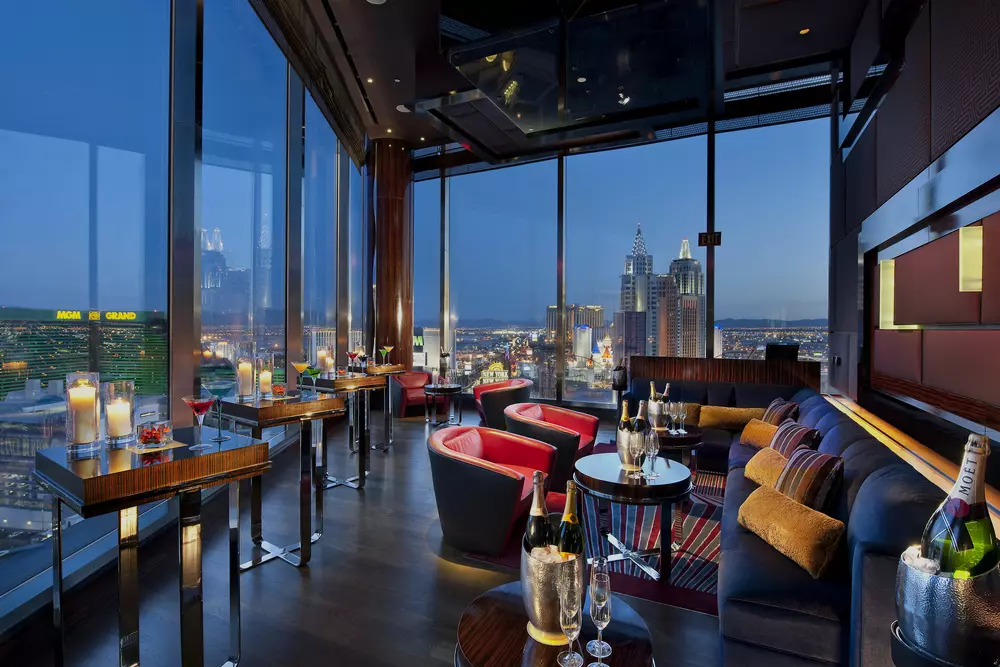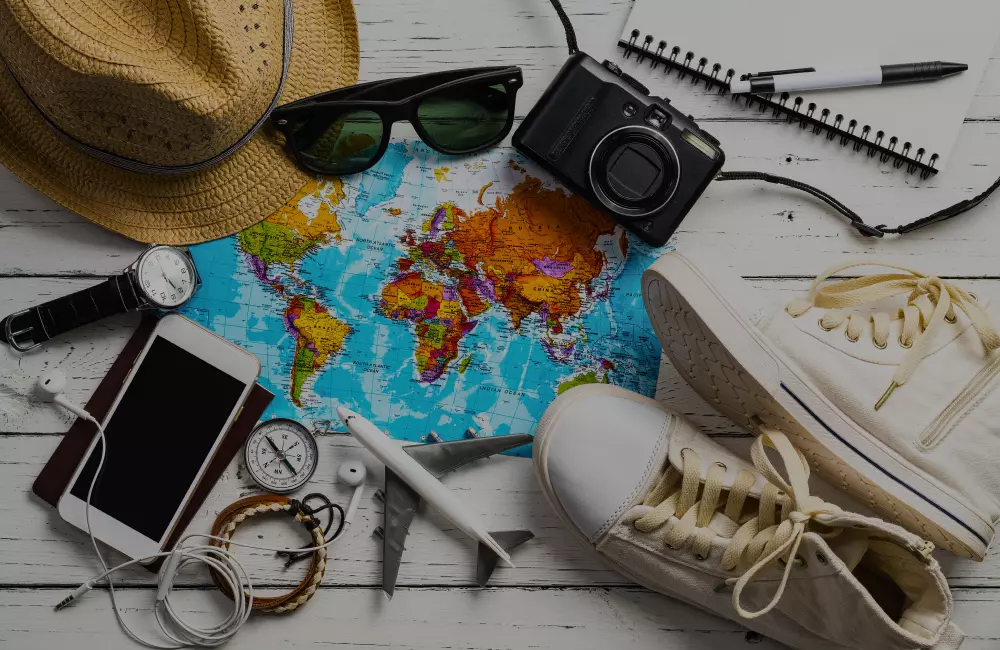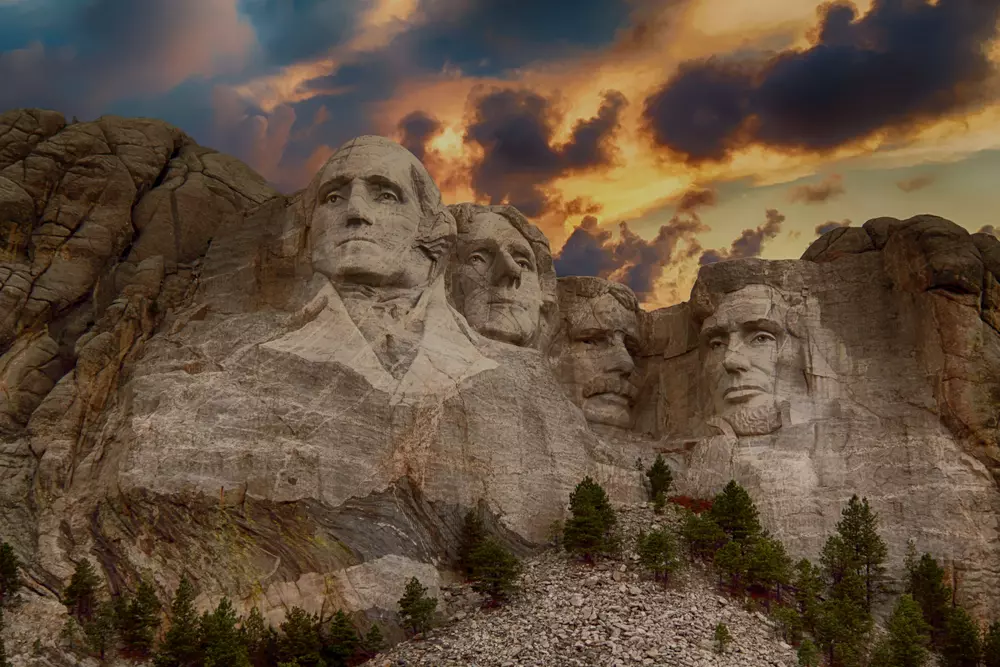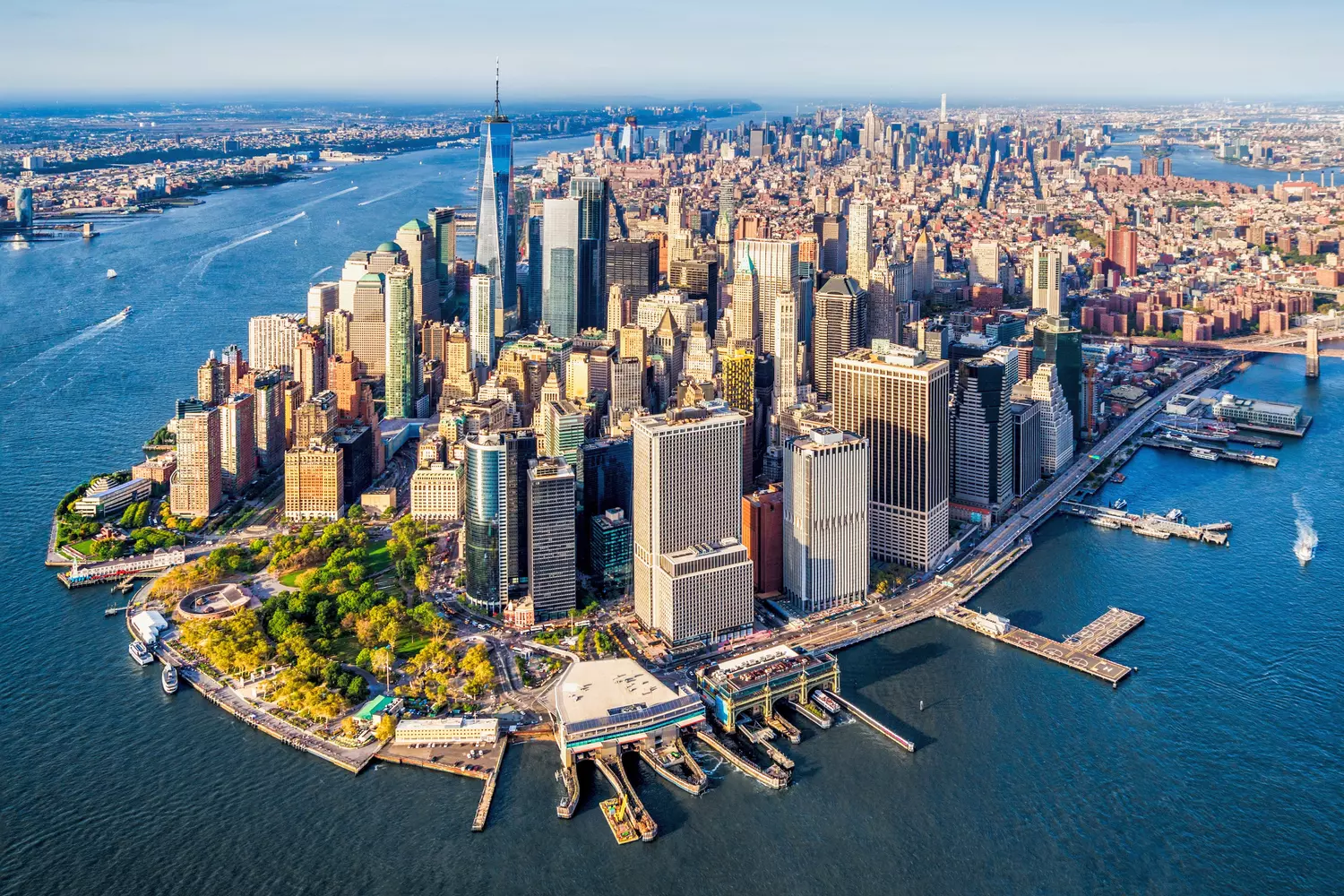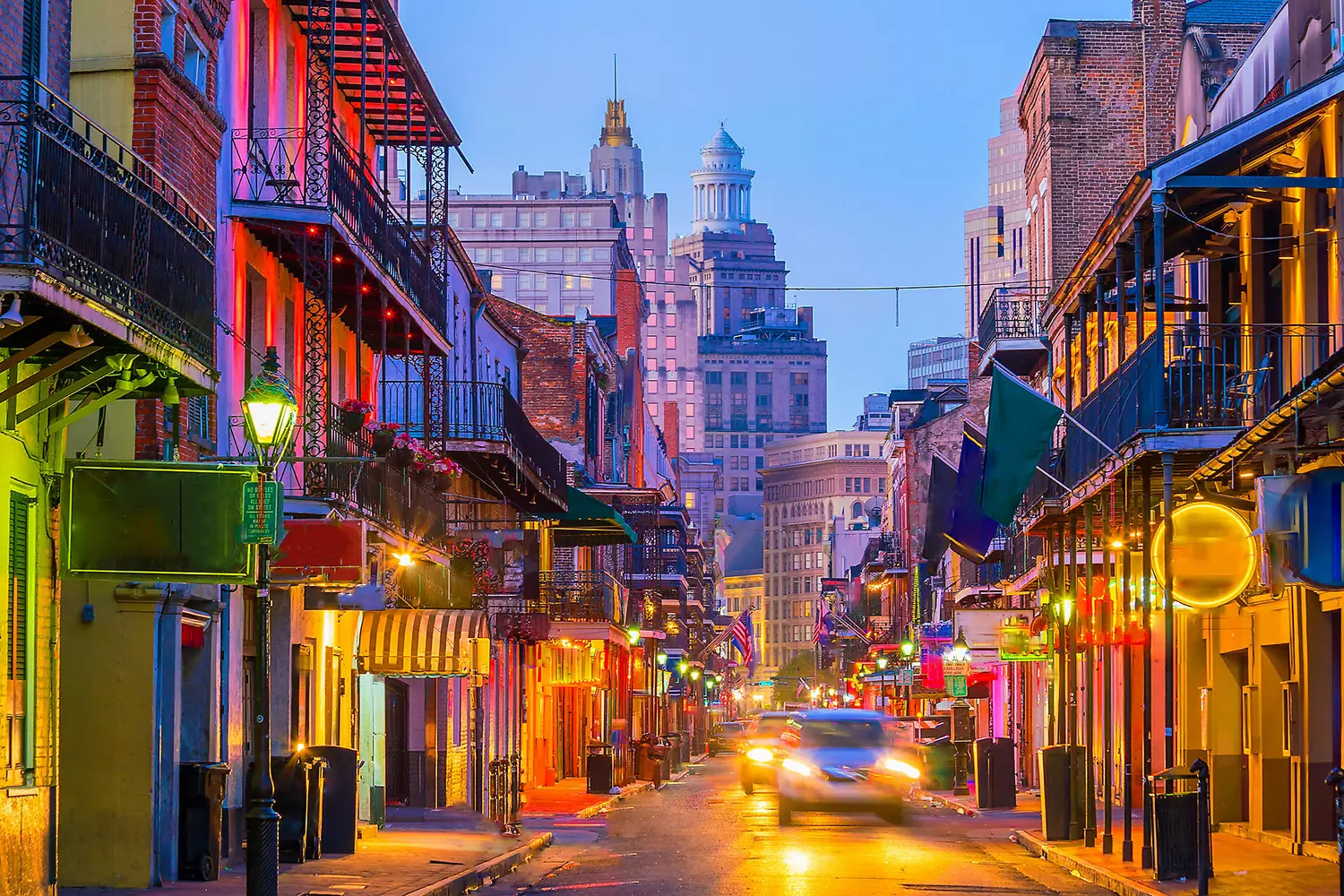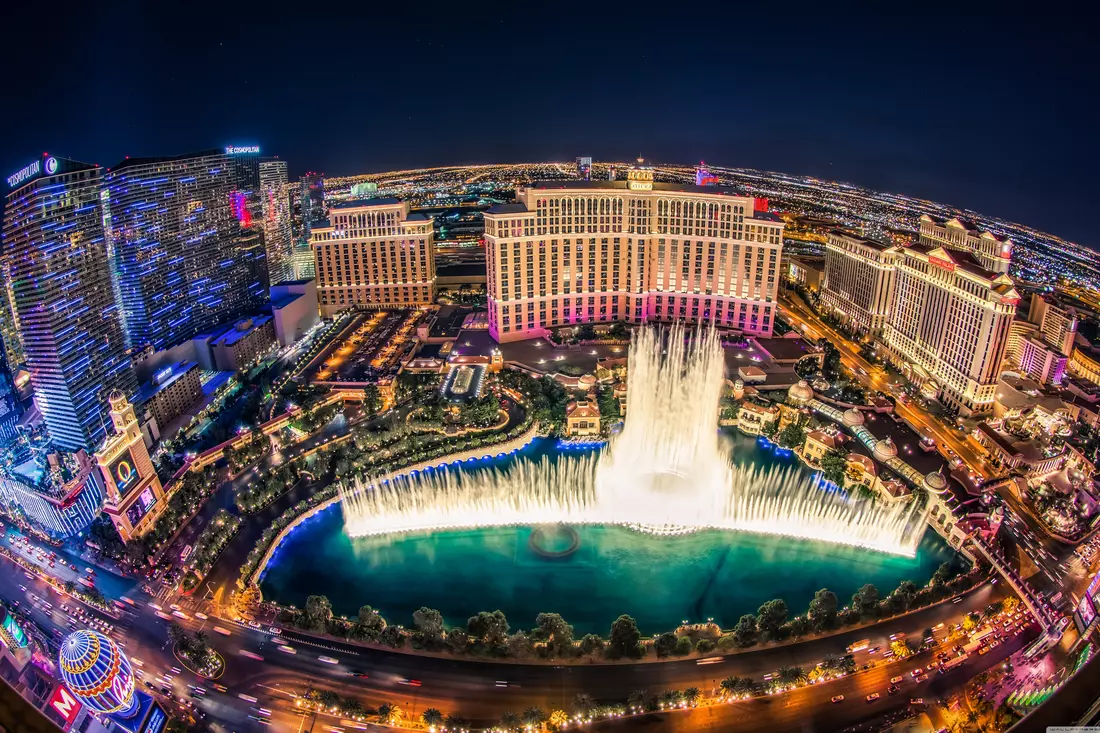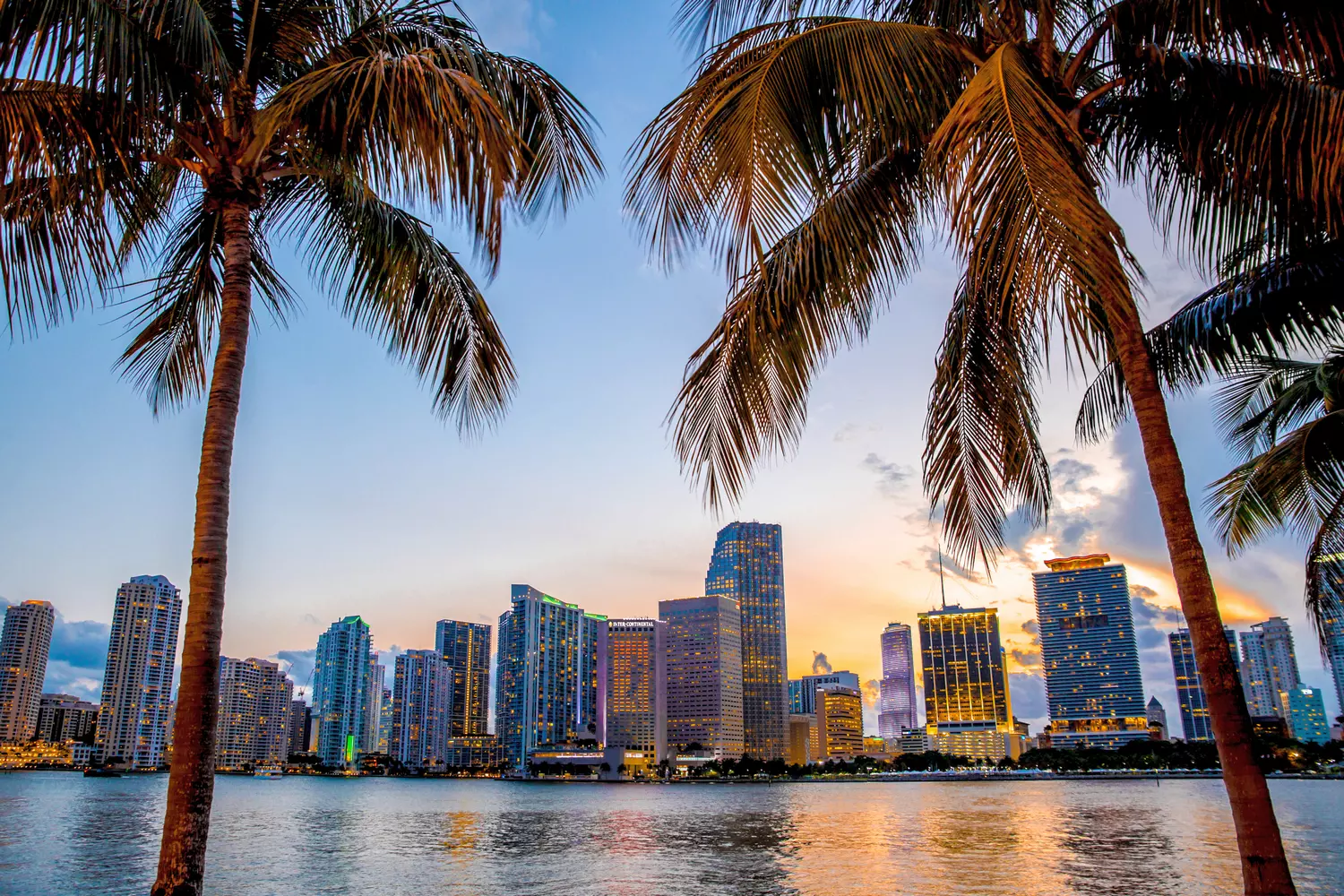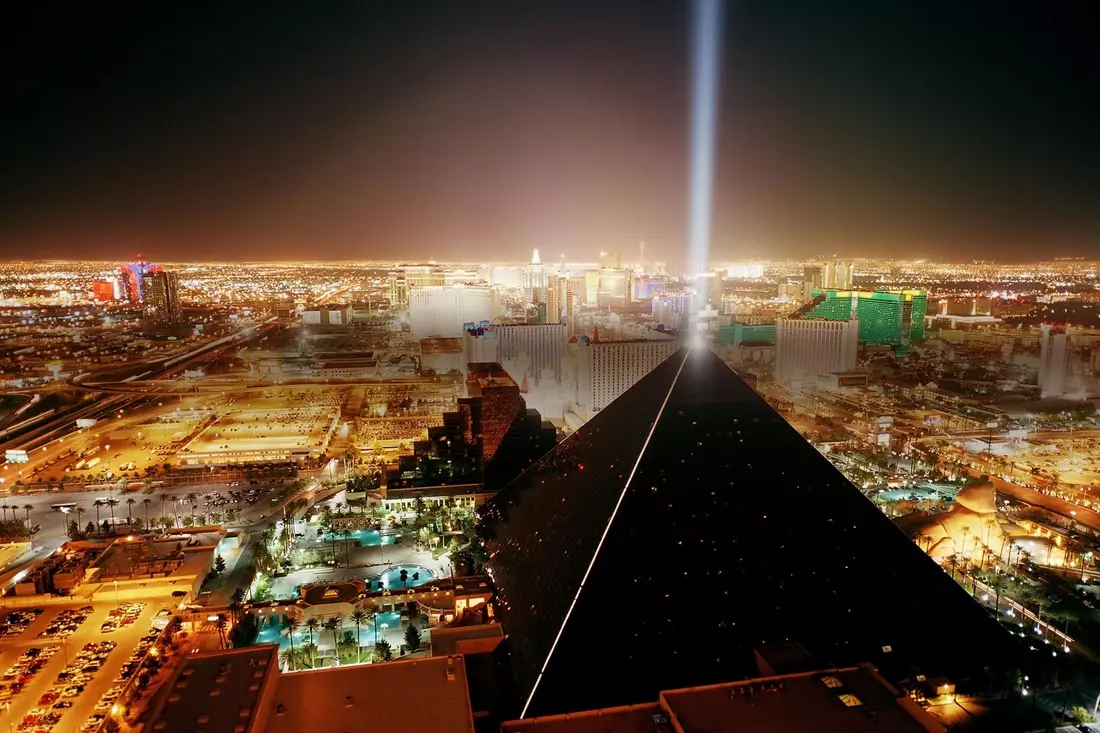The Grand Canyon is one of those places on Earth that cannot be described in words. It must be seen. Better yet — seen from the right viewpoints. This monumental chasm in the earth, stretching 446 km along the Colorado River, amazes not only with its scale but also with how the light, color, terrain, and atmosphere change from one point to another.
It’s not just a huge crack in the Earth’s crust. It is one of the greatest natural masterpieces, created by time, water, wind, and millions of years of geological processes. Here, every meter of land holds the chronicles of the past — from the oldest rocks over two billion years old to the traces of the first inhabitants of these lands.
Visiting the Grand Canyon means not just seeing a landscape but feeling the breath of the planet. And as grand as it may sound, there is a strange sensation inside — as if you are standing before something greater than a person, a city, or history. Before something eternal.
It’s important not just to get to the Canyon. It’s important to stand exactly where it unfolds before you in all its glory. At the right angle, at the right time of day, and preferably without crowds. Such places exist — and now we will tell you all about them.
In this article, we will cover:
- Where the best Grand Canyon viewpoints are located;
- How to get there and what to see;
- What distinguishes the South, North, and West Rims;
- Which hiking routes are worth taking;
- Where the most photogenic views and perfect sunsets are;
- How to see the canyon from a helicopter or the Skywalk.

"We traversed the canyon, and it traversed us. This place changes a person forever." — John Wesley Powell, explorer (from the 1869 expedition journals)
The Magic of the View: Why Grand Canyon Lookouts Are an Experience, Not Just a Sight
“You don’t just look at the Grand Canyon. It looks back at you,” say the native inhabitants of these lands — the Navajo Indians, and there is some truth to that.
You look ahead, and it feels as if the whole world has paused. A silent abyss, endlessly layered with the passage of time, unfolds in all its might. But take just a few steps to the side, and an entirely different scene appears before you. The thing is, the Grand Canyon is alive. It breathes light, it plays with colors and perspective.
At dawn, the rock peaks are bathed in warm golden-pink hues, like on the canvas of an old master. By noon, they become harsh and contrasting, resembling the terrain of Mars. And at sunset, the canyon walls fade into deep blues and purples, as if settling down to sleep. All these changes happen within a single day. That’s why the same viewpoints are worth visiting at different times of day.
It’s like music: the same melody sounds different when played on a violin, piano, or by an orchestra. Likewise, the Grand Canyon reveals itself anew from every angle. This is why photographers love these places — here you can capture a moment that no one else will ever replicate.
Fun fact: thanks to its light effects, the Grand Canyon is often compared to a theater. Morning is the opening act, midday the climax, and evening the emotional finale. And the audience in this theater — is you.
So if you want to see the Grand Canyon not as a postcard tourist but as an explorer — stay with us. The most exciting part is yet to come.
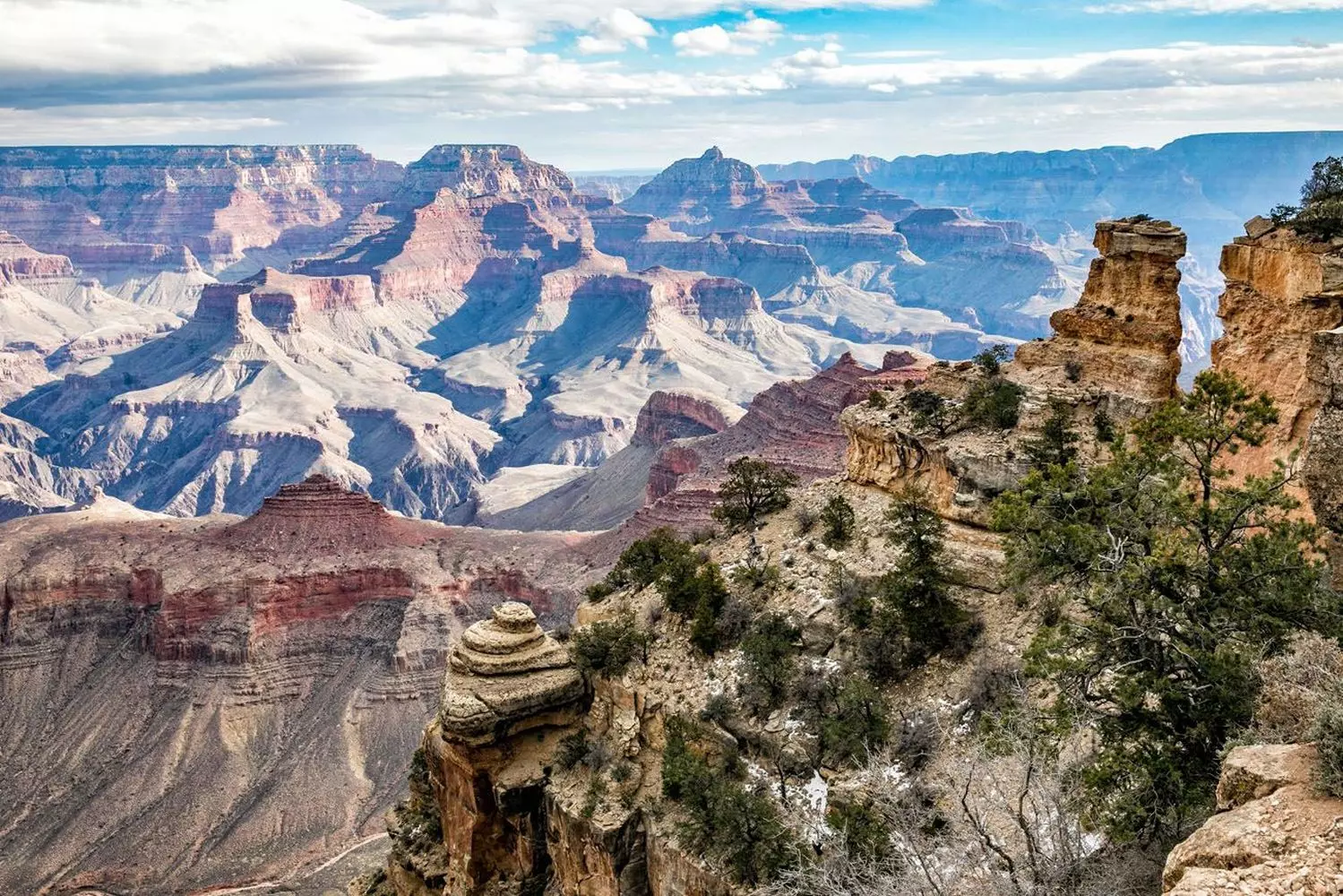
South Rim: Where the Grand Canyon Reveals Its Soul and Most Striking Vistas
The South Rim is like the Grand Canyon’s calling card. This is where most tourists come, and it’s from here that you get those iconic “postcard” views familiar even to those who have never been to the USA. It’s the most accessible and infrastructure-developed part of the national park. But despite its popularity, you can still find solitude here, especially if you know where to look and when to visit.
The South Rim is easy to get around: there’s a free shuttle service, plenty of well-maintained trails, visitor centers, cafes, and even art galleries. But its main value lies in its spectacular panoramas, each one unique.
5 Viewpoints You Can’t Miss
- 01. Mather Point — Your first encounter with the canyon
This is the first spot almost all park visitors come to. Mather Point is just a few minutes’ walk from the main visitor center and offers a stunning first impression: before you unfolds the central part of the canyon with jagged cliffs stretching into the hazy horizon.
When to go: early morning or close to sunset — midday tends to be very crowded.
Feature: comfortable platforms with railings and viewing terraces, perfect for leisurely contemplation. - 02. Yavapai Point — A look deep into geological history
One of the few spots where you can clearly see the Colorado River. On a clear day, you can spot the opposite rim and the patterns of its rocky walls. This is also where the Yavapai Geology Museum is located — a small but rich space with panoramic windows and scale models of rock layers.
Great for: those wanting to understand how the canyon became what we see today.
Kid-friendly: interactive exhibits make this place accessible and educational for the whole family. - 03. Desert View — Tower, wind, and endless horizon
This viewpoint is at the easternmost part of the South Rim. Its main highlight is the Desert View Watchtower, built in 1932 by architect Mary Colter. The tower is designed in the Pueblo Indian architectural style and decorated with paintings and ornaments reflecting the culture of local tribes.
Memorable for: one of the widest and most “airy” views of the Colorado River valley from the top of the tower.
Tip: visit during the day — the view east is especially good in the morning. - 04. Hopi Point — The main stage for sunsets
This viewpoint extends farther into the canyon than the neighboring ones, creating an immersive “plunge” into the abyss. The cliffs here seem to surround you on all sides, and at sunset they glow in vivid shades of fire: scarlet, crimson, and purple.
Favorite spot for photographers: this is where the most dramatic shots are taken.
How to get there: via the free shuttle bus route Hermit Road, especially popular in the warmer season. - 05. Mohave and Pima Points — Silence, vastness, and the sound of water
These two spots are often underestimated but shouldn’t be. They’re a bit farther from the main tourist crowds but offer no less breathtaking views:
- Mohave Point
One of the few places where you can clearly see how the Colorado River “winds” between the cliffs, creating a wave-like landscape. - Pima Point
This spot is especially quiet. If you listen closely, you can hear a rare sound here: the distant murmur of water echoing off the canyon walls.
Perfect for solitude: worth visiting if you want to sit at the edge and be alone with the grandeur of nature.
Insider tip: If you have only one day on the South Rim, start at Mather Point, then head to Yavapai, after lunch visit Desert View, and spend the evening at Hopi Point or Mohave — depending on your mood. This will give you a full picture of the Grand Canyon’s many faces in just a few hours.
The South Rim is the perfect starting point for getting to know the canyon. Here you’ll grasp its scale, feel the spirit of the place, and want to explore further. But if your soul craves silence and solitude, it’s worth heading to the North Rim — which we’ll cover in the next section.

The North Rim: A Secret Side of the Canyon for Serenity Seekers
If the South Rim is like Hollywood with its bright colors and crowds of spectators, then the North Rim is an intimate theater where every sound is amplified and every glance feels like a revelation. Everything is different here: the air is cleaner, the pines taller, the coolness more palpable. And most importantly, there are almost no people.
The North Rim is located higher than the South Rim — at over 2,600 meters above sea level. It is open to visitors only from mid-May to mid-October — for the rest of the year, the roads are snowed in. On one hand, this makes it harder to reach. But on the other hand, this is exactly why it remains a secluded corner of the Grand Canyon.
- 01. Bright Angel Point — facing the wind and eternity
This short but impressive trail starts right from the Grand Canyon Lodge — the only hotel on the North Rim. Walking along the narrow ridge is like walking a blade’s edge: cliffs drop off on both sides, and only the railings keep you from completely dissolving into the height. The wind plays with your hair, and far below, somewhere at the bottom of this grand bowl, the Colorado River whispers.
Best time: early morning. Then the rocks still hold a silvery mist, and the sunrise paints them in pastel tones.
Feeling: this is one of those places where silence speaks louder than words. - 02. Cape Royal — a path through the forest to the canyon and arch
The road to Cape Royal itself deserves a chapter of its own. It winds through dense pine forests scented with resin and coolness, and suddenly opens to a stunning panorama: a wide view of the side canyons scattered like petals, and the famous Angels Window — a natural rock arch through which you can see the Colorado River below.
Best time: sunset. The light filters through the arch, and the rocks turn a rich orange.
Feature: this is one of the most “open” spots in the canyon, perfect for cloud watching and light plays. - 03. Point Imperial — a point above the world
The highest point of the entire Grand Canyon — 2,683 meters above sea level. Here, you truly feel closer to the sky. From here, you see not only the canyon itself but also the edges of the Painted Desert and the sharp cut of the Marble Canyon, like a folded crease of the earth’s crust.
Contrasts: here you can especially notice the natural layers and color transitions — from the green alpine forests to rusty-red cliffs and the blue of distant mountains.
Tip: bring a thermos of tea and spend some quiet time here — this place is not for a quick selfie but for a real inner response.
Interesting fact: only about 10% of tourists make it to the North Rim. Not because it’s worse. It simply demands more from the traveler — time, willingness, and a love for solitude. And in return, it offers silence, peace, and a sense of true discovery.
Is it worth going to the North Rim?
Definitely — yes, if you want to experience the canyon not as a tourist but as a traveler. There is less infrastructure, less transport, less noise — but more nature, air, time, and... yourself. Important to know:
- Open only from May to October (roads are closed in winter due to snow);
- Better to go by car — no public transport goes there;
- Ideal for hikers, photographers, couples, and introverts.
The North Rim is the Grand Canyon without the advertising. A pure, calm version of this great natural wonder.
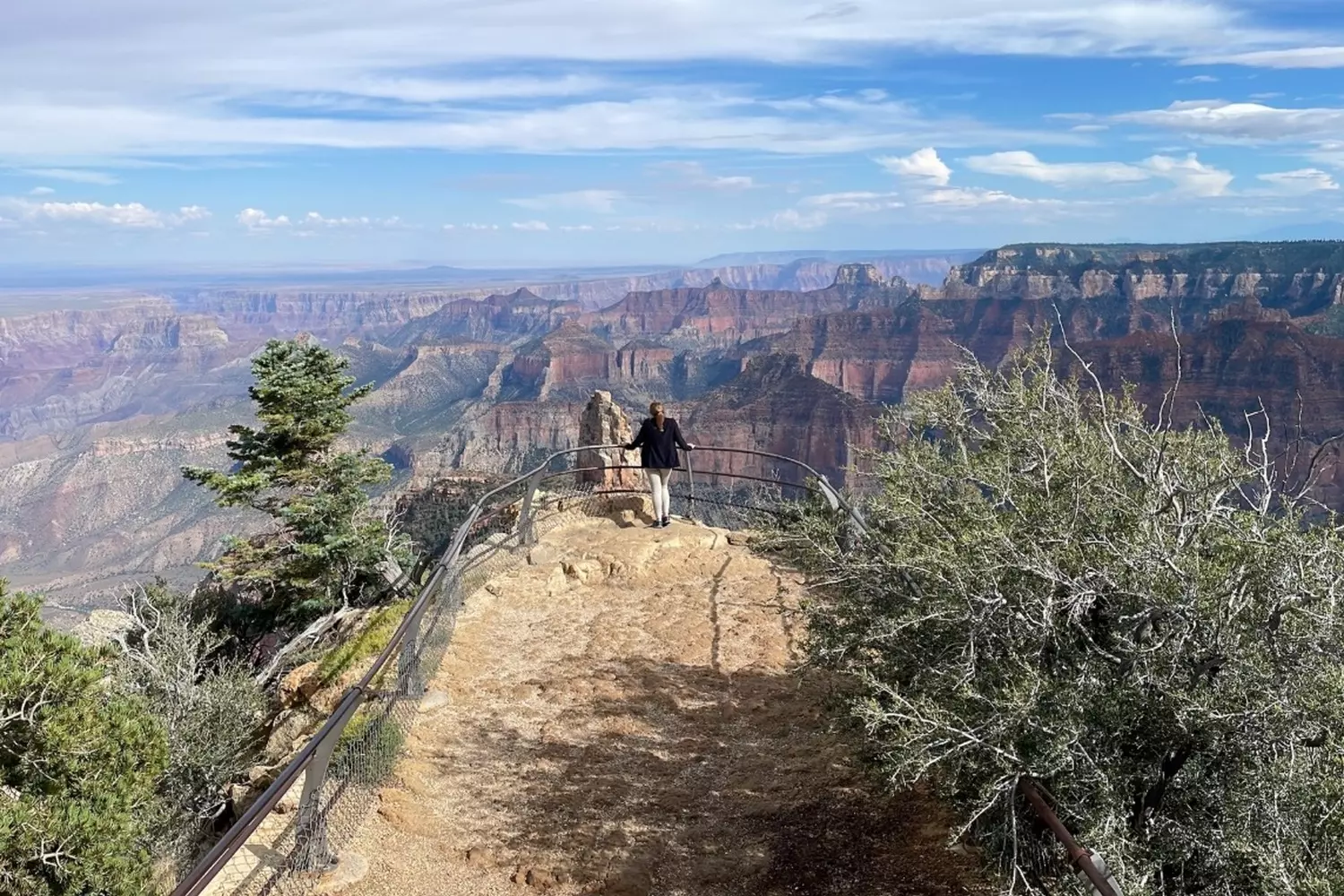
West Rim: Skywalk, Adventure Spirit, and Cliffside Vistas
The West Rim is the territory of the Hualapai tribe, and here the Grand Canyon reveals a completely different side: less known, but no less impressive. This is not a national park in the classic sense, but native land where their own rules and customs apply. However, it is here that the canyon’s most extreme and famous attraction is located — the glass Skywalk bridge.
Unlike the South and North Rims, there is less infrastructure and fewer tourist routes here. But that’s the charm: you are closer to nature, closer to cultural heritage, and farther from the noisy crowds.
What you must do at the West Rim
- 01. Walk the Skywalk — where the Earth disappears beneath your feet
Welcome to the Skywalk — a glass horseshoe extending 21 meters beyond the canyon’s edge and soaring 1200 meters above the abyss. Beneath your feet is transparent glass, under which is a sheer drop. Around you — only sky, wind, and the echo of your own heartbeat.
This is not just an observation deck. It’s a challenge to yourself.
Even if you’re not afraid of heights — fear might appear. But that’s the thrill: overcoming the trembling in your legs and stepping into the void… which, of course, is securely supported by multilayered glass, capable of holding the weight of 800 people at once. However, the bridge allows only 15–20 people at a time so everyone can enjoy the moment.
Tip: photos on the Skywalk itself are prohibited (for safety reasons), but local professional photographers will gladly take pictures of you — and they’ll be truly amazing shots. - 02. Eagle Point and Guano Point — the canyon in IMAX format, but live
Skywalk is not the only spot for breathtaking views on the West Rim. There are two more places that must be on your route:
- Eagle Point
The rocks here form the shape of an eagle with outstretched wings. This is not a metaphor — the shape is clearly visible, especially at sunset. It’s a sacred place for the Hualapai, and even if you are far from Native American mythology, you’ll immediately feel something reverent in the air. - Guano Point
A harsher and almost Martian atmosphere. Rusty metal remnants of a cable car that once led to a cave with guano (processed bat droppings) remind of past industrial ambitions. But the main thing is the panorama. From Guano Point, the canyon is seen in all its raw fury: cliffs, ledges, the river below — as if standing on the roof of the world.
Lifehack: come closer to evening. The light softens, there are fewer tourists, and photos look like they’re straight from the cover of National Geographic.
- 03. Discover Hualapai flavors: from bison to fry bread
Even if you’re not a foodie, you must try the local cuisine.
The Hualapai tribe’s cuisine is simple but deeply authentic. It’s not a restaurant menu, but a story on a plate, rooted in centuries of tradition:
- Fry bread
Bread fried over an open flame, crispy outside and soft inside. Often served with honey, jam, or beans. - Bison dishes
Stewed, smoked, grilled. The true taste of the Wild West. - Cactus, corn, beans
Vegetables that have fed tribes for centuries in the deserts of Arizona and Nevada. - Cactus berry lemonade
Refreshing and surprisingly tasty pink-colored drink.
Tip: order combo sets — so you can try everything at once. And don’t forget to chat with the cooks — often they are tribe members who will gladly share their traditions.
The West Rim is not just “another part of the canyon.” It’s a special world. A bit rougher, but more honest. Closer to the earth, which makes it only more powerful. It’s a place where you can truly feel small — and at the same time part of something big.
If you want the Grand Canyon to be remembered not only by pictures, but also by adrenaline, taste, and stories — this is where you need to go.
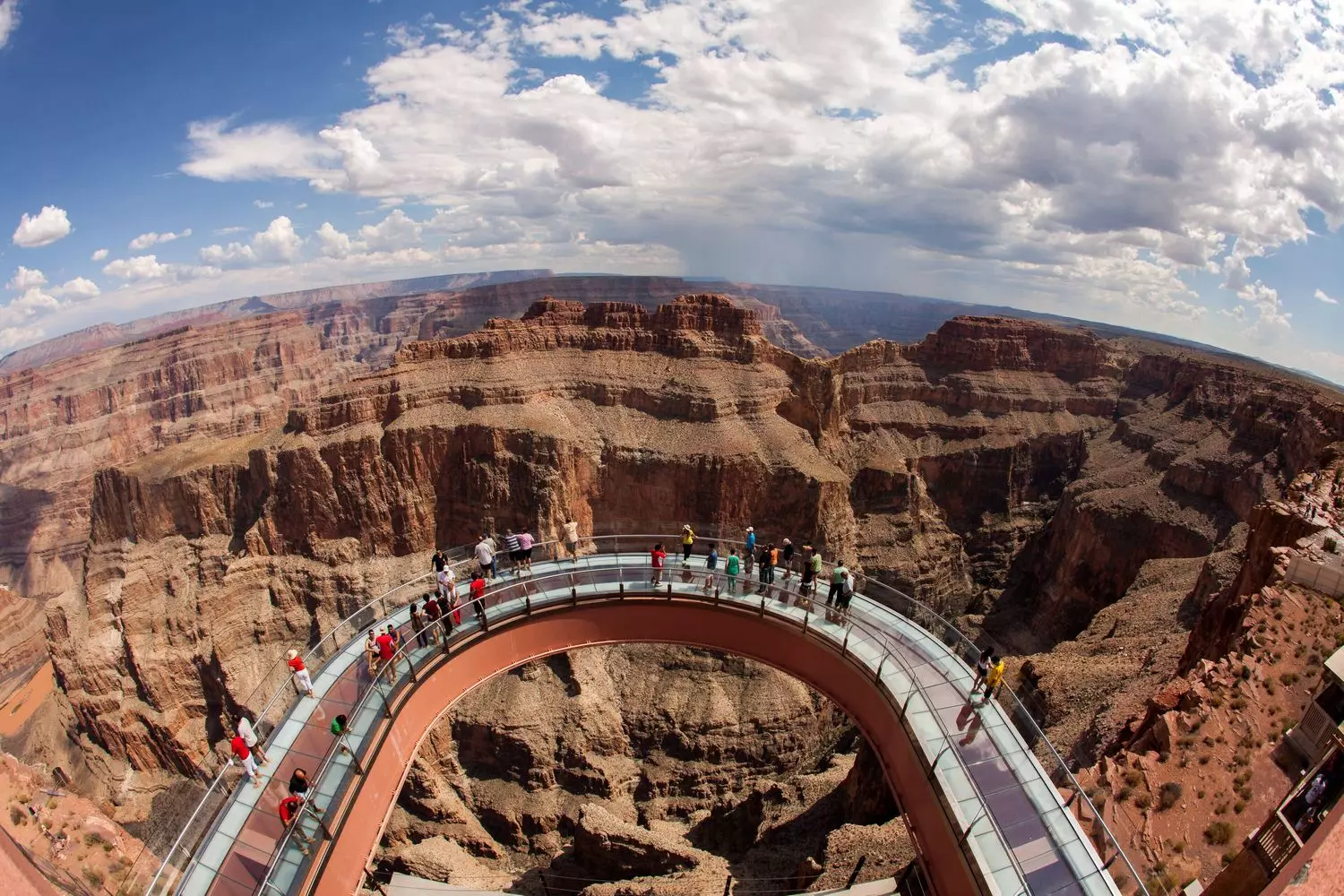
Best Restaurants in Las Vegas: Where to Dine in Sin City
Seeing the Grand Canyon from the Sky: Where the Earth Drops into the Abyss
If hiking trails and viewpoints no longer give you chills, it’s time to see the Grand Canyon from a bird’s-eye view. Helicopters and light planes reveal a completely different perspective — scale, shape, layers, and the Colorado River that has carved the plateau over millions of years. It’s like looking at a living geological encyclopedia, only without text and boring diagrams.
Why you should take to the skies
- A full overview of the landscapes
From the ground, it’s impossible to take in the entire breadth of the canyon — its twists, intersections, and side gorges. From above, a true natural canvas painted by time unfolds before you. - Unforgettable photos and videos
Filming is allowed during the flight — and this is where you get those shots that later hang framed on the wall or become your phone’s wallpaper. Morning light, long shadows, sun rays over the rocks — pure magic. - Access to remote areas
Some parts of the canyon are impossible or extremely difficult to visit on foot or by car. Only the air gives a chance to peek into the most inaccessible corners and understand how gigantic and diverse this natural monument truly is.
Flights depart from various points: Las Vegas, Tucson, Flagstaff, Page, and even locations near the South Rim. There are short 30-minute tours as well as extended trips with landings, champagne, and picnics on the canyon’s edge.
Prices range from $200 to $600 — depending on the duration, route, season, and type of aircraft. Helicopter tours are a bit more expensive but allow you to hover over specific spots. Planes cover greater distances and fly higher.
Tip: book your flight in advance, especially in the high season — from April to October. The best times for photos and emotions are morning and pre-sunset hours.
The Grand Canyon from the air is not just a tour. It’s a chance to become a bird for a moment and see one of nature’s greatest wonders as the clouds do.

Journey Through Time: Top Hiking Trails in the Grand Canyon
Some places are not just to be seen — they must be walked. And the Grand Canyon is exactly one of those places. The hiking trails here are not just strolls, but journeys through geological epochs, physical endurance, and personal revelations. Every turn, every ledge, and every rock tells a story. The wind and dust only make it more vivid.
Top trails to hike at least once
- 01. Bright Angel Trail
The most popular trail on the South Rim, and for good reason. Perfect for beginners (you can hike to the first viewpoint and turn back) as well as for experienced hikers. Along the way — sun shelters, water stations, rest areas, and stunning views. Starts right at Grand Canyon Village and descends to the Colorado River. - 02. South Kaibab Trail
More scenic and steeper than Bright Angel, but without water or shade. Begins with a panorama and continues past iconic spots including Ooh Aah Point. The name says it all: from this viewpoint you get your first full view of the canyon. This trail is better suited for morning hikes when the sun is still gentle. - 03. North Kaibab Trail
The only trail leading from the North Rim down to the bottom of the canyon. This is a serious route — a full day hike or overnight trip. It passes through stunning natural areas including Roaring Springs and Ribbon Falls. Suitable only for well-prepared hikers.
Interesting fact: the rim-to-rim hike from the North Rim via North Kaibab Trail to the South Rim via Bright Angel Trail is about 38 kilometers. It’s a dream for many enthusiasts.
Important tips
- Summer temperatures at the bottom of the canyon can reach +45°C. This is serious: heat exhaustion, dehydration, and heat strokes are common emergencies.
- Carry plenty of water (at least 3–4 liters per person).
- Wear a hat, sunglasses, and use sunscreen.
- Plan your route in advance and inform someone about your plans.
The Grand Canyon is not just a view from above; it’s dust under your feet and the feeling that you are walking on the edge of the world. And if you’re ready — set out on the trail. It’s worth every step.
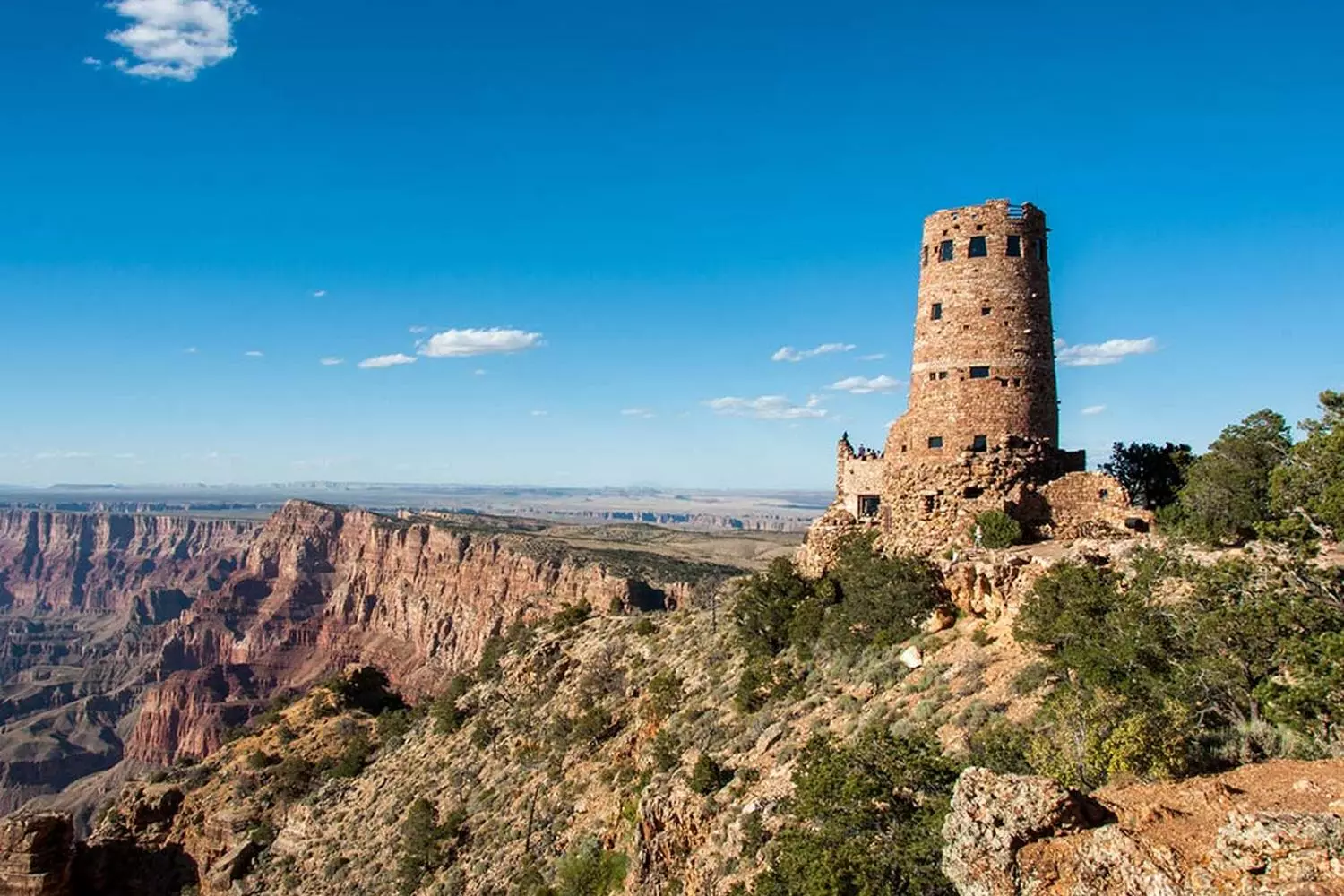
Masters of Light: The Best Photo Spots in the Grand Canyon
The Grand Canyon is like a true artist: it loves to pose, but on its own terms. It’s picky about light, angle, weather, even the viewer’s mood. But if you catch the right moment — a shot will unfold before you that won’t just get likes, but will stay with you forever. No filter can replace the feeling of standing before this grandeur with a camera — your heart skipping a beat at the beauty.
Locations where your lens comes alive
- 01. Hopi Point — the legend of sunset shots
If sunsets could speak, they would do it from here. Hopi Point is the perfect place to catch the sun slowly sinking into the rock formations, tracing every fold and ledge. The lens captures the fire in the sky, and all that’s left is to press the shutter. - 02. Ooh Aah Point — aptly named
On the South Kaibab Trail, there’s a moment when the path curves — and you freeze. Suddenly, an abyss opens before you. That’s Ooh Aah Point. The perfect angle for photos that scream “I was at the edge of the world!” - 03. Desert View — scale without borders
Probably the most panoramic spot on the South Rim. Here, you don’t need to chase the angle — the canyon itself finds you. The watchtower against the endless gorges adds drama and uniqueness to your shot. - 04. Cape Royal — a play of light on edges
The North Rim is famous for its soft evening light, especially at Cape Royal. Photos here are not just beautiful, they’re almost painterly. Especially striking is the “Angel’s Window” — a natural stone arch perfectly framing the canyon in your frame. - 05. Skywalk — photos above the void
If you want a shot that will make viewers’ knees wobble — this is the place. The glass platform hanging over the abyss creates the illusion of flying. Just don’t forget to smile, even if you’re trembling inside.
Tips for frame hunters
- Early morning and late evening are golden hours. The light is soft, tourists are few, and the canyon is especially expressive.
- Use polarizing filters — they cut haze and enhance depth.
- Turn your back to the canyon — seriously. The most touching shots are of people’s faces seeing the abyss for the first time. Those shots are about emotions.
Interesting fact: photos taken at Cape Royal during the summer solstice can catch the “reverse rainbow” effect — when light reflects off the rocks at unusual angles.
The Grand Canyon doesn’t need filters. It is the main effect itself. All you need is light, some patience, and a heart open to beauty. Don’t chase perfect symmetry — capture raw emotions. They are the essence of true photography.

When to Go to the Grand Canyon and How to Find Peace Amidst Its Grandeur
The Grand Canyon is a place that captures your heart at first sight, but to truly love it, you need to choose the right time and moment. This natural masterpiece doesn’t like rush or crowds — it reveals itself to those ready to listen and observe.
- 01. Best time: spring and autumn — the canyon’s golden seasons
Spring and autumn are ideal times to visit. Nature delights with soft colors and offers comfortable temperatures perfect for hiking and photo hunting. Summer can be scorching, with temperatures at the canyon’s bottom reaching 45°C, making you tire quickly. Winter can be cold in some spots, and trails might be closed due to snow and ice.
Spring is nature’s awakening and wildflower bloom, while autumn brings golden sunsets and crystal-clear air. It’s in these seasons that the canyon reveals its full beauty. - 02. How to avoid crowds and find solitude
Crowds are an inevitable companion of the South Rim, but solitude is achievable if you know the secrets:
- Early morning before 9:00 AM
The time when the canyon seems to wake up with you. Soft light, freshness, and minimal visitors make it perfect for leisurely walks and photoshoots. - North Rim — a quiet alternative
Far fewer tourists and no less impressive views. Especially pleasant to visit on weekdays — tranquility and natural depth guaranteed. - Hidden spots: Shoshone Point, Lipan Point, Yaki Point
These places remain in the shadow of main viewpoints but offer real treasures — solitude and unusual canyon angles without the bustle.
- 03. How to get to the Grand Canyon: a brief guide
- From Las Vegas
4–5 hours by car to the West Rim. This route is great for combining the bright city energy of Vegas with the measured charm of the canyon. - From Phoenix
About 4 hours drive to the South Rim. A great option for those wanting to explore the classic part of the park with developed infrastructure. - From Flagstaff
Only 1.5 hours. Flagstaff is the nearest major city where tours and highway routes to the canyon start. - Buses and tours
If you don’t want to rent a car, you can choose an organized tour from many cities in Arizona and Nevada. It’s convenient and safe, especially for those who want to focus on experiences rather than driving.
Planning your trip wisely, you can discover the Grand Canyon not only as one of the world’s most popular natural landmarks but also as a place for personal immersion, inspiration, and peace. The key is choosing the time and places where the canyon will appear exactly as you want to see it — vast, mighty, and at the same time incredibly personal.
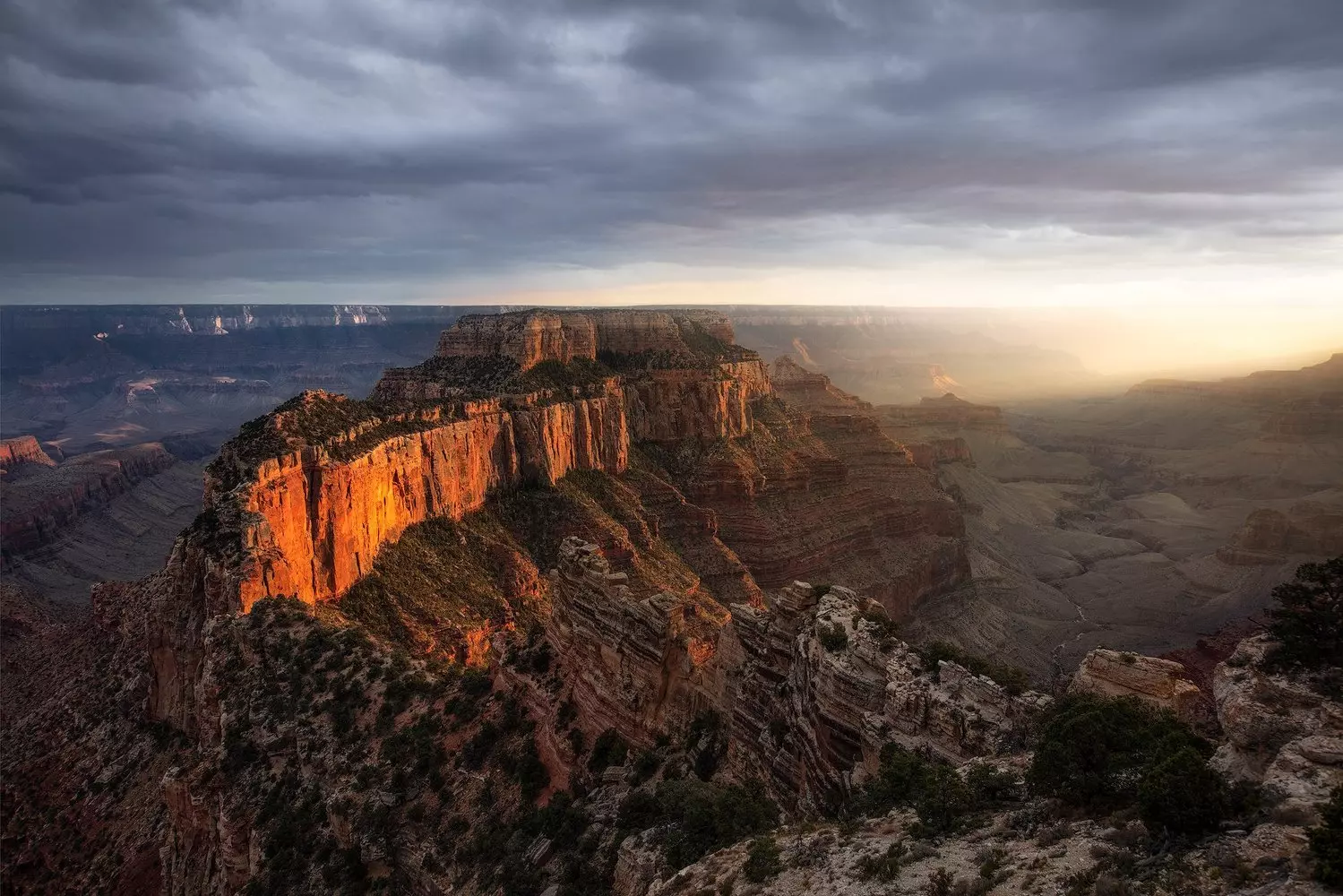
Viewpoints That Stay with You for a Lifetime
The Grand Canyon is not just geography. It’s an experience. It’s the moment when you look into the abyss—and it looks back at you. It’s a sunrise that paints the rocks gold, and a sunset that brings tears to your eyes.
To see the canyon in all its beauty, it’s important not just to pick a point on the map, but the right place, time, and route. And also to take care of logistics, comfort, and safety.
American Butler is here to help. We organize personalized tours to the best Grand Canyon viewpoints:
- Transfers from any city;
- Professional guides;
- Optimized routes tailored to your interests;
- Assistance booking Skywalk and helicopter tours.
Let your Grand Canyon experience become a personal story, not just mass tourism.














